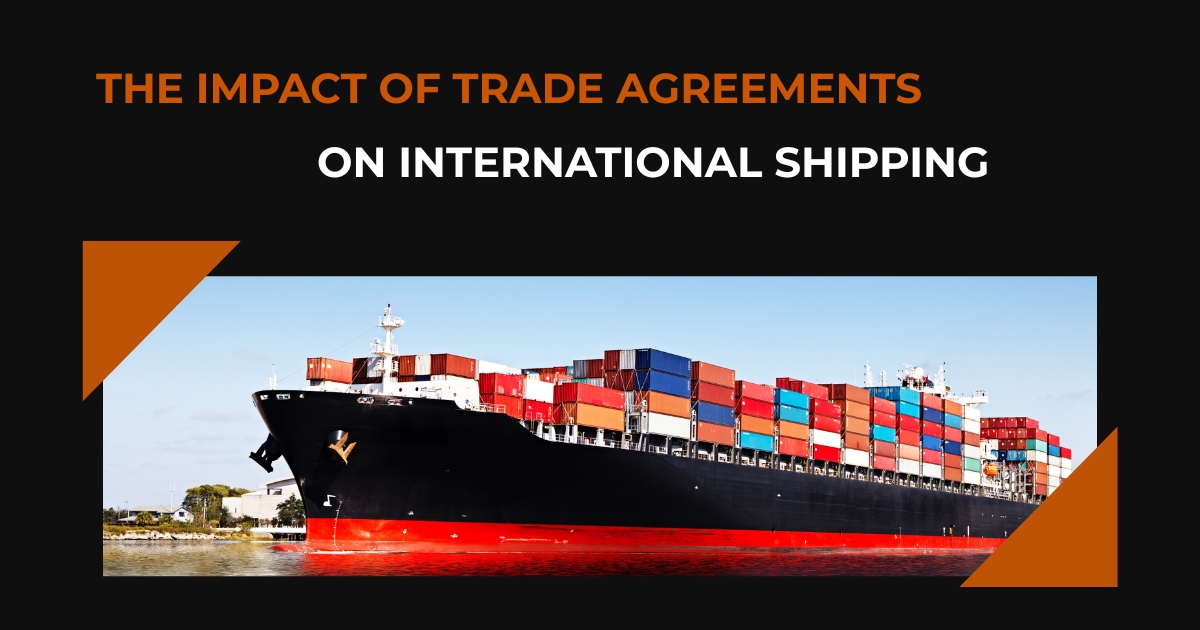
In today’s interconnected economy, international shipping stands as the backbone of global trade. Every product that crosses borders—whether electronics, clothing, or raw materials—is part of a vast logistics network shaped by political and economic policies. Among the most influential of these are trade agreements, which have dramatically transformed how goods move around the world.
What Are Trade Agreements?
Trade agreements are formal arrangements between two or more countries that define the rules of trade in goods and services. These agreements often focus on:
- Reducing or eliminating tariffs and customs duties
- Simplifying import/export documentation
- Encouraging fair competition and investment
- Enhancing cooperation in logistics and customs
Examples include:
- NAFTA (now USMCA) – between the U.S., Canada, and Mexico
- European Union Single Market – allowing free trade among member nations
- ASEAN Free Trade Area (AFTA) – promoting regional economic integration in Southeast Asia
How Trade Agreements Shape International Shipping
- Reduced Shipping Costs
By lowering tariffs and customs fees, trade agreements directly decrease the overall cost of shipping goods internationally. Businesses can move products across borders with fewer financial barriers, allowing for more competitive pricing in global markets.
- Faster Customs Clearance
Many modern trade deals promote customs cooperation and digital documentation, reducing delays at ports. Streamlined customs procedures mean fewer inspections, quicker transit times, and lower risk of shipment backlogs.
- Expansion of Trade Routes
When countries sign new trade agreements, new trade lanes often open up. Shipping lines and freight forwarders adapt their routes to meet demand from newly active markets. This leads to increased port activity, regional logistics development, and infrastructure investment.
- Encouragement of Regional Supply Chains
Free trade zones foster the creation of regional supply chains, where manufacturing and distribution centers are strategically placed in neighboring countries. This approach optimizes shipping efficiency and lowers transportation costs.
- Standardization and Compliance
Agreements often include regulatory alignment—common standards for labeling, packaging, and safety. This harmonization reduces complexity for logistics companies that operate across multiple borders, ensuring compliance with fewer obstacles.
Challenges and Limitations
While trade agreements bring clear advantages, they also introduce challenges:
- Complex rules of origin – determining where a product truly “comes from” for tariff benefits can be complicated.
- Geopolitical risks – political shifts can disrupt or renegotiate existing agreements, impacting shipping predictability.
- Uneven benefits – smaller nations or industries may gain less advantage compared to larger economies with stronger trade leverage.
The Future of Trade and Shipping
The next generation of trade agreements is focusing on digital trade, sustainability, and e-commerce logistics. Initiatives like paperless trade systems, green shipping corridors, and AI-driven customs clearance are redefining the logistics landscape.
Countries that continue to foster open, transparent trade relationships will enjoy faster, cheaper, and more sustainable shipping ecosystems—a crucial factor for global economic growth.
✳️ Conclusion
Trade agreements act as powerful catalysts in shaping the world’s shipping industry. By reducing barriers, harmonizing standards, and encouraging cooperation, they make international logistics smoother and more efficient. For businesses engaged in global trade, understanding these agreements isn’t just beneficial—it’s essential for staying competitive in an ever-evolving market.
